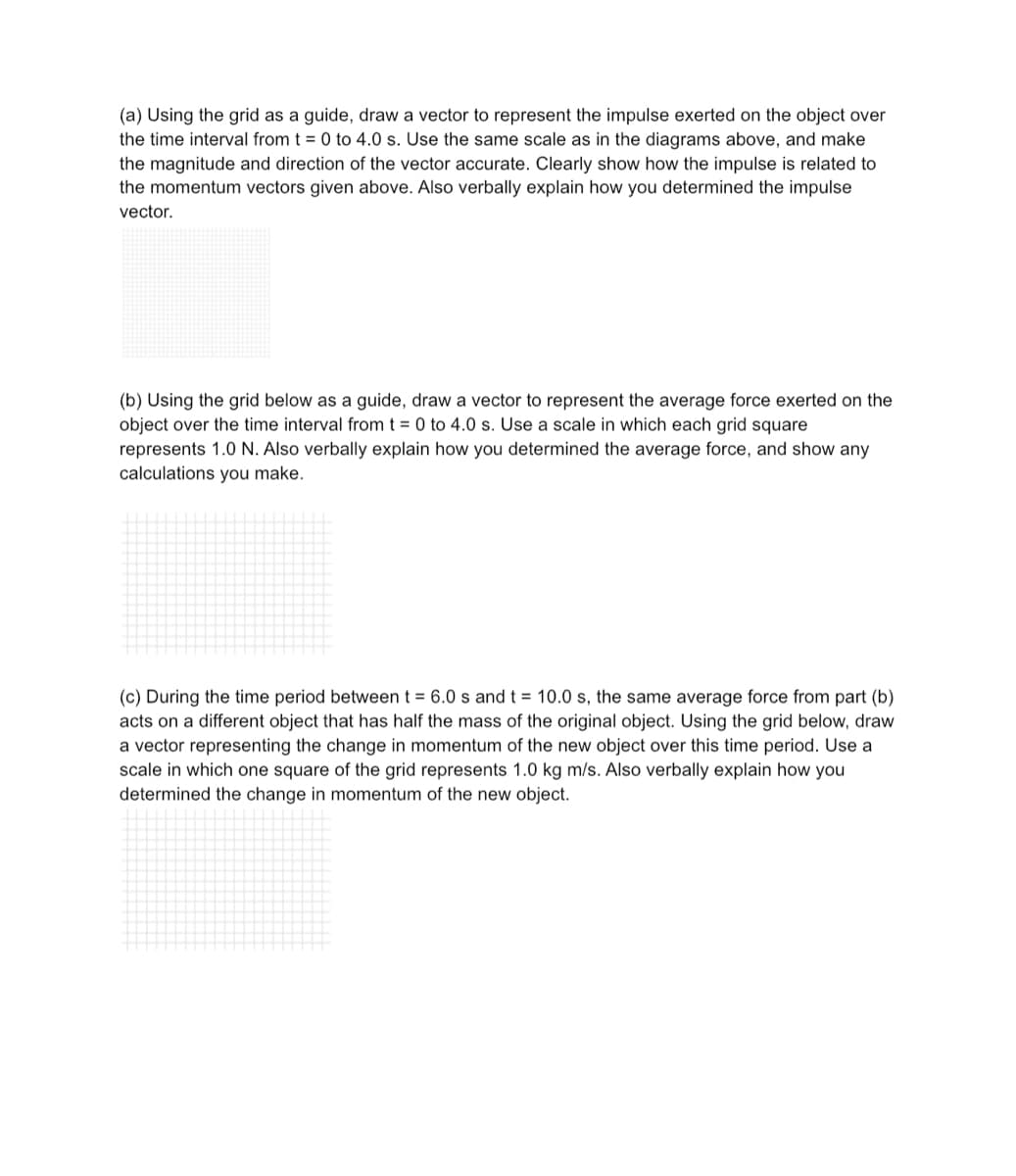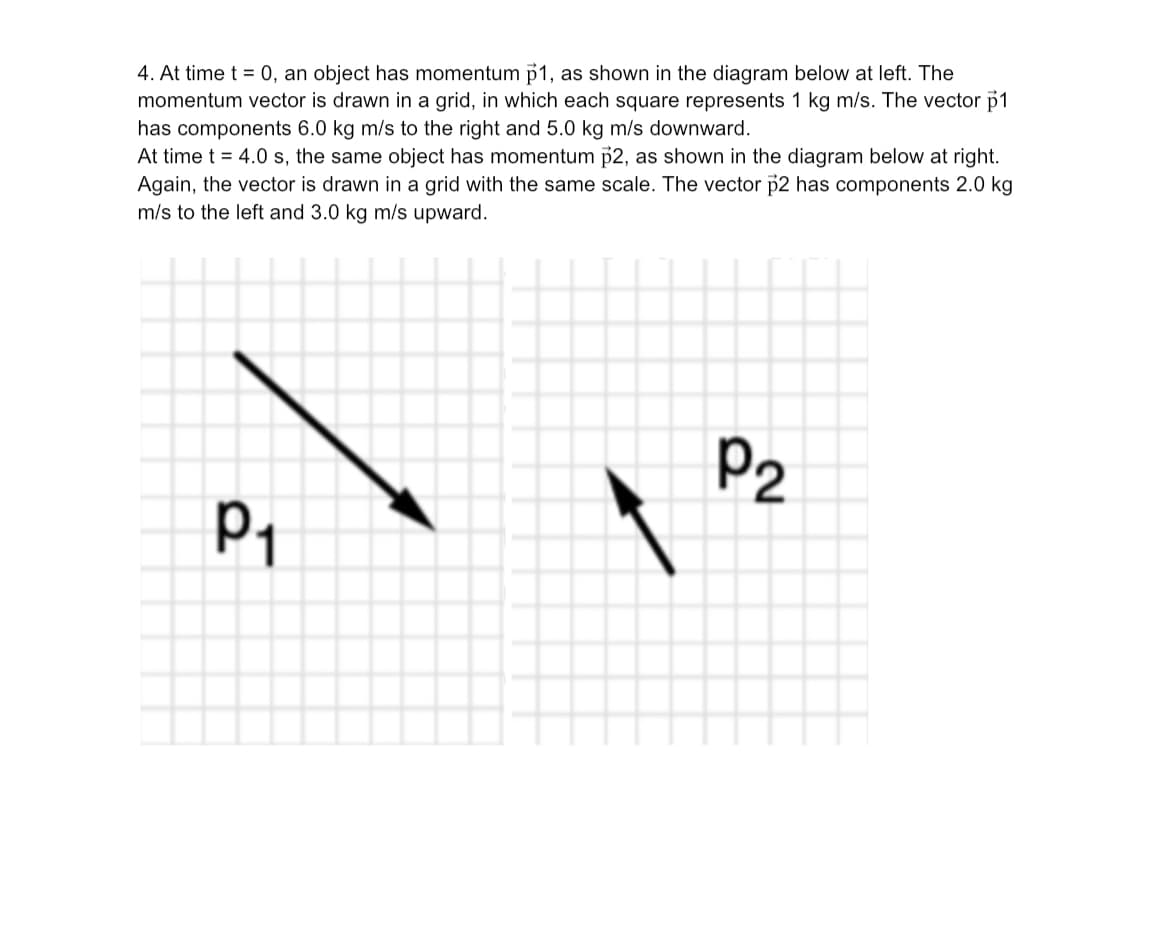(b) Using the grid below as a guide, draw a vector to represent the average force exerted on the object over the time interval from t = 0 to 4.0 s. Use a scale in which each grid square represents 1.0 N. Also verbally explain how you determined the average force, and show any calculations you make.
(b) Using the grid below as a guide, draw a vector to represent the average force exerted on the object over the time interval from t = 0 to 4.0 s. Use a scale in which each grid square represents 1.0 N. Also verbally explain how you determined the average force, and show any calculations you make.
Related questions
Question
4 b please

Transcribed Image Text:(a) Using the grid as a guide, draw a vector to represent the impulse exerted on the object over
the time interval from t = 0 to 4.0 s. Use the same scale as in the diagrams above, and make
the magnitude and direction of the vector accurate. Clearly show how the impulse is related to
the momentum vectors given above. Also verbally explain how you determined the impulse
vector.
(b) Using the grid below as a guide, draw a vector to represent the average force exerted on the
object over the time interval from t = 0 to 4.0 s. Use a scale in which each grid square
represents 1.0 N. Also verbally explain how you determined the average force, and show any
calculations you make.
(c) During the time period between t = 6.0 s and t = 10.0 s, the same average force from part (b)
acts on a different object that has half the mass of the original object. Using the grid below, draw
a vector representing the change in momentum of the new object over this time period. Use a
scale in which one square of the grid represents 1.0 kg m/s. Also verbally explain how you
determined the change in momentum of the new object.

Transcribed Image Text:4. At time t = 0, an object has momentum p1, as shown in the diagram below at left. The
momentum vector is drawn in a grid, in which each square represents 1 kg m/s. The vector p1
has components 6.0 kg m/s to the right and 5.0 kg m/s downward.
At time t = 4.0 s, the same object has momentum p2, as shown in the diagram below at right.
Again, the vector is drawn in a grid with the same scale. The vector p2 has components 2.0 kg
m/s to the left and 3.0 kg m/s upward.
%
P₁
✓
2
P₂
Expert Solution
This question has been solved!
Explore an expertly crafted, step-by-step solution for a thorough understanding of key concepts.
Step by step
Solved in 2 steps with 2 images
